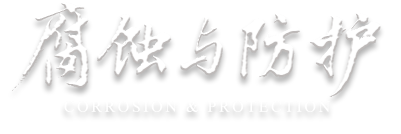Abstract:
Based on the commonly used stainless steel pitting corrosion potential test standards at home and abroad, using the potentiodynamic polarization curve measurement method, the effects of residence time after final polishing, potential scan rate and solution pre-deoxidation time on the self-corrosion potential (
Ecorr) and pitting potential of 304L austenitic stainless steel and S32101 duplex stainless steel in 3.5% NaCl solution were studied. The results showed that when the residence time after final polishing was extended from 0 h to 24 h,
Ecorr of two kinds of steel was significantly increased, and the pitting corrosion potential was also increased. After potential scanning rate was increased from 10 mV/min to 20 mV/min, the change of pitting corrosion potential of two kinds of steel was not obvious. When solution pre-deoxygenation time was increased from 0.5 h to 1 h,
Ecorr of two kinds of steel was decreased and pitting potential was increased.

 下载:
下载: